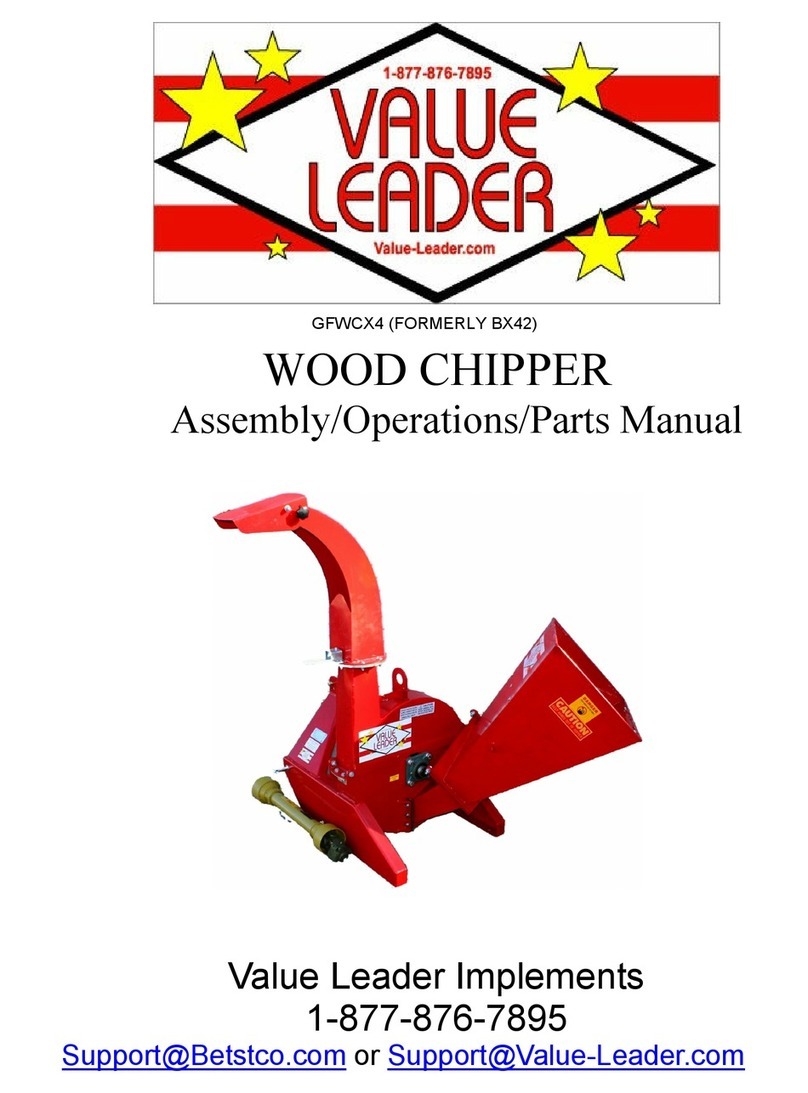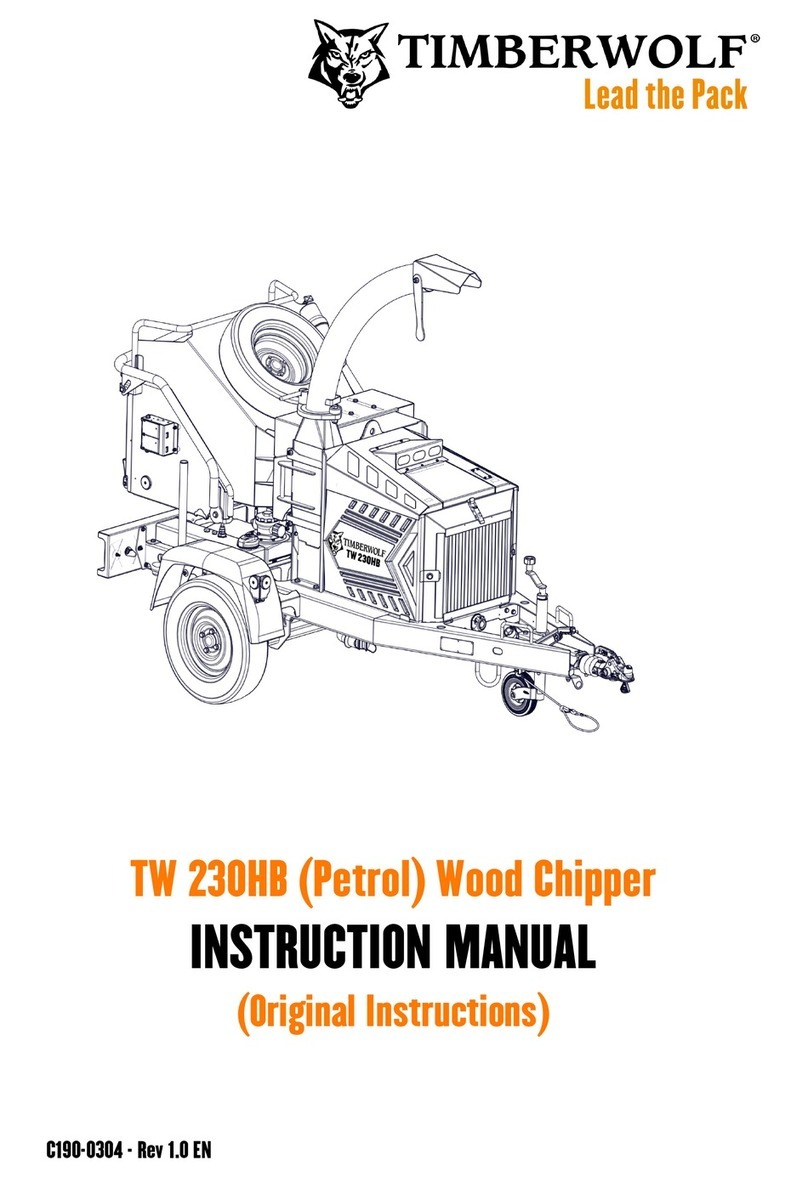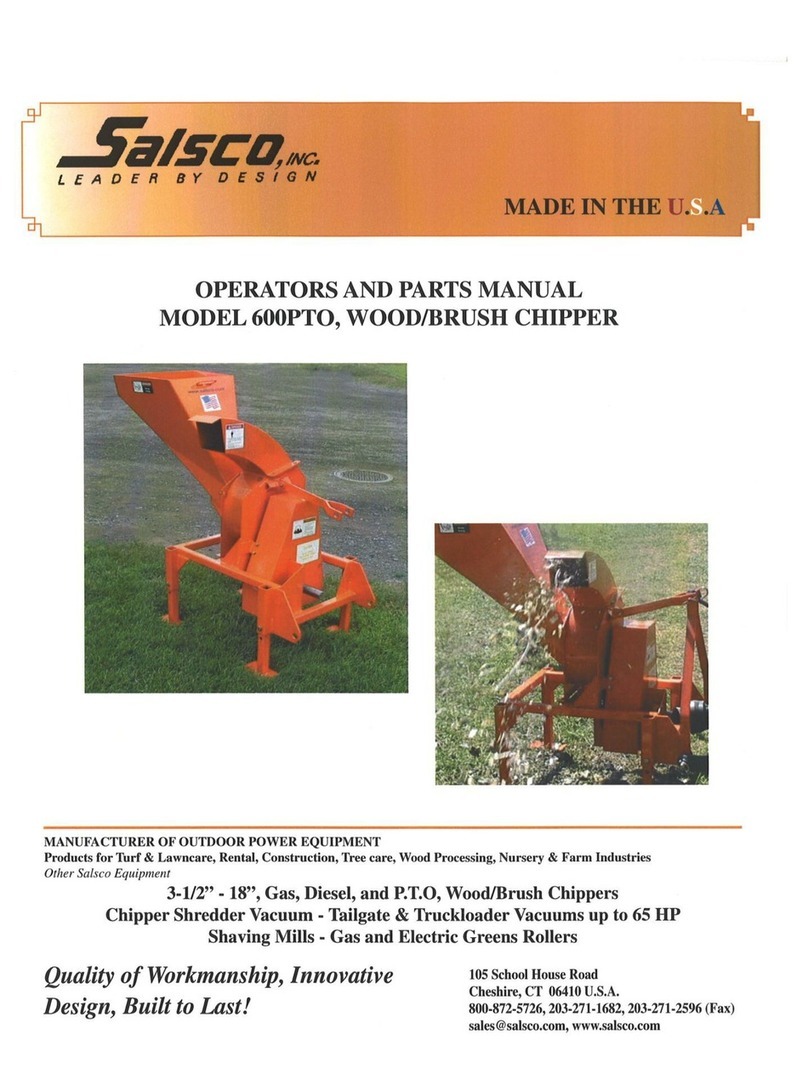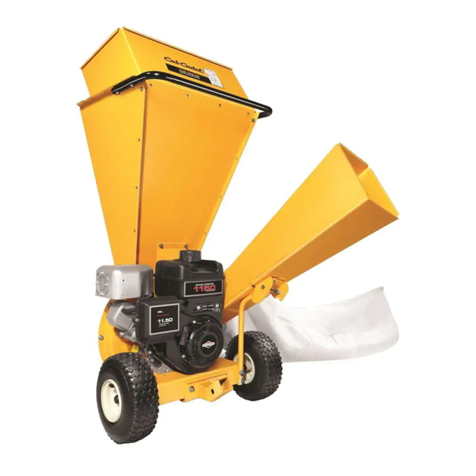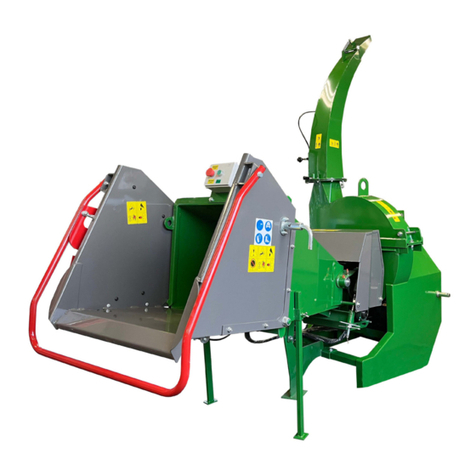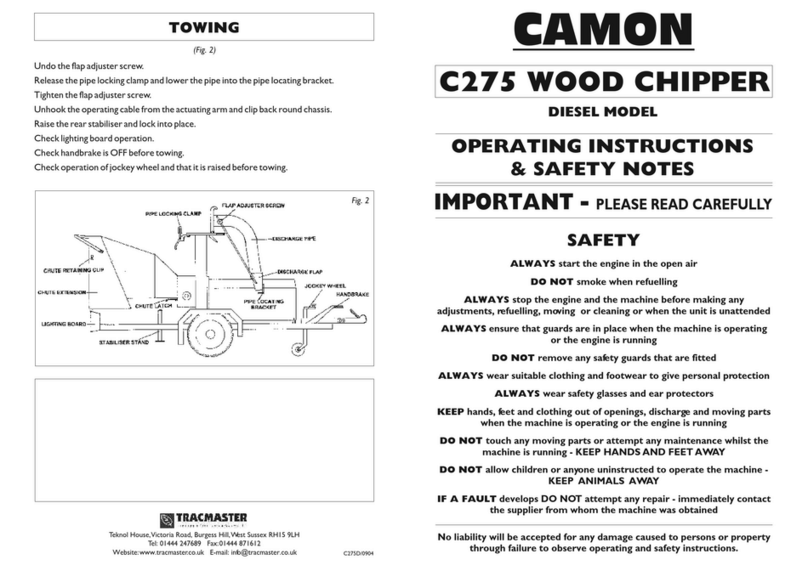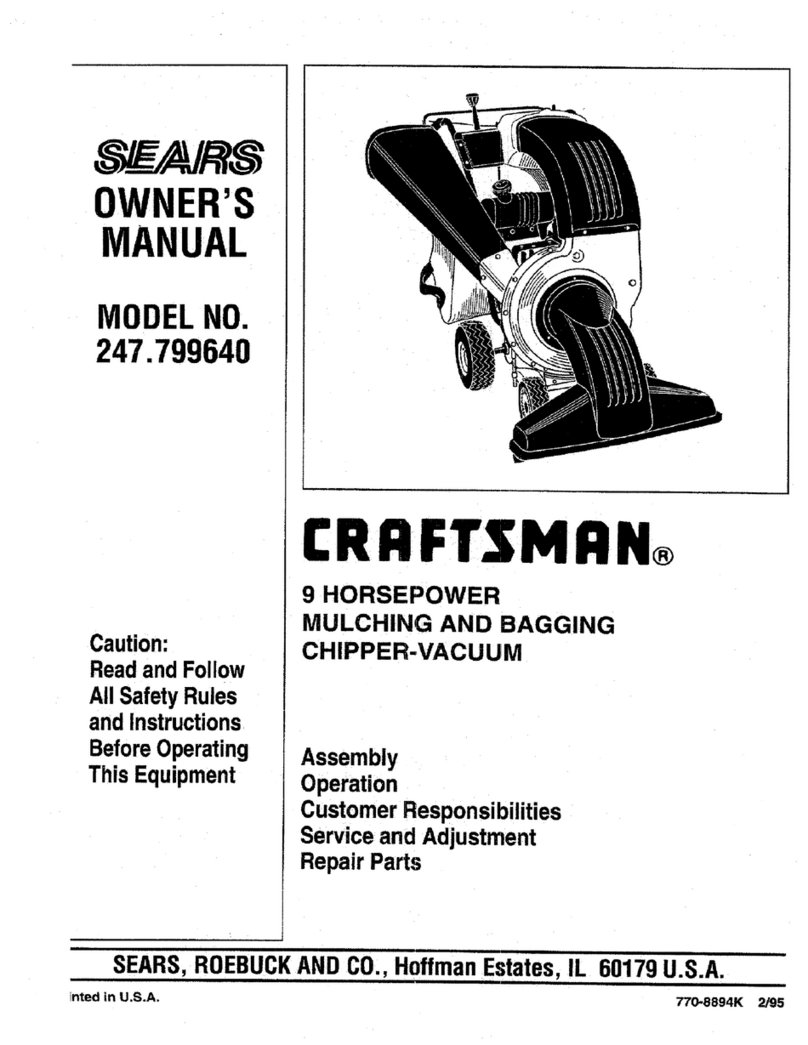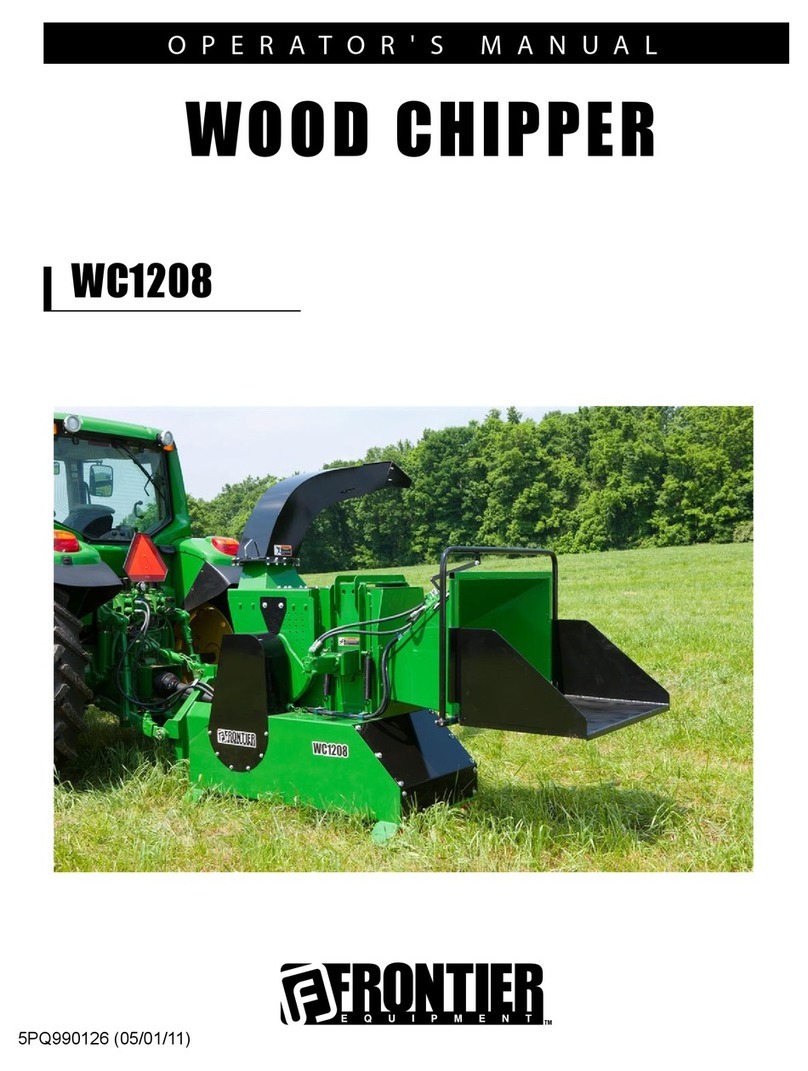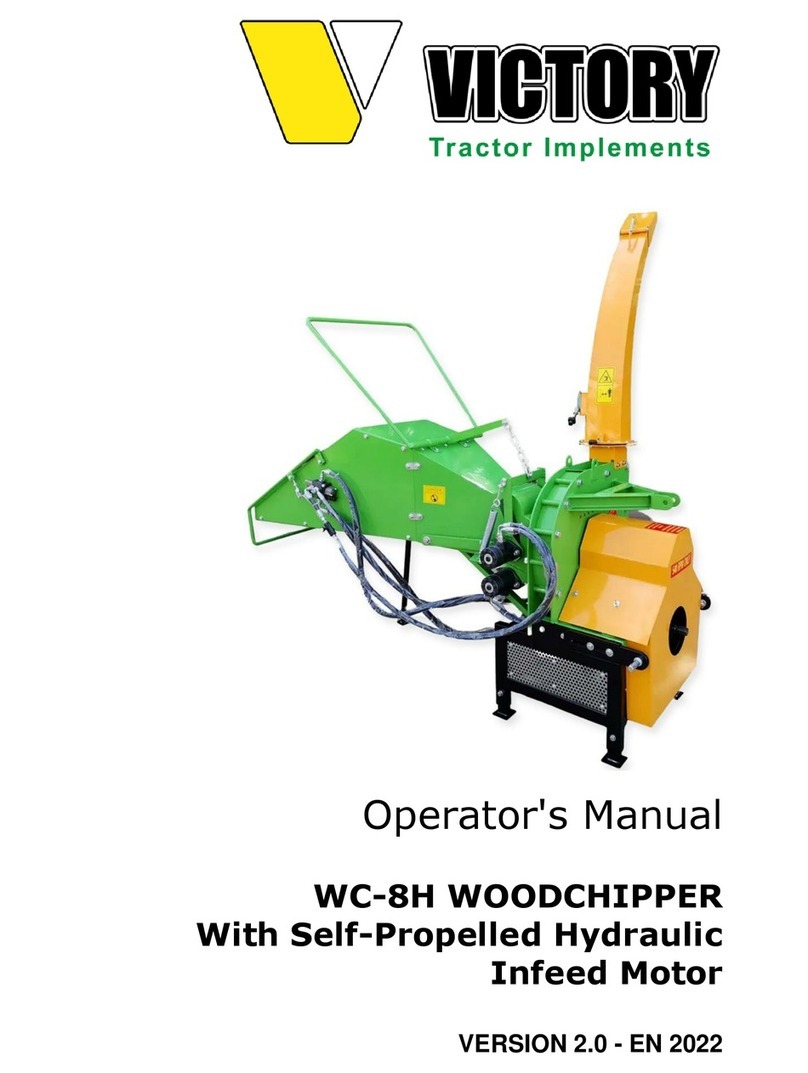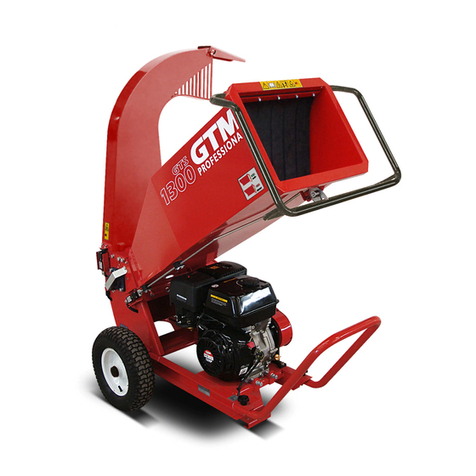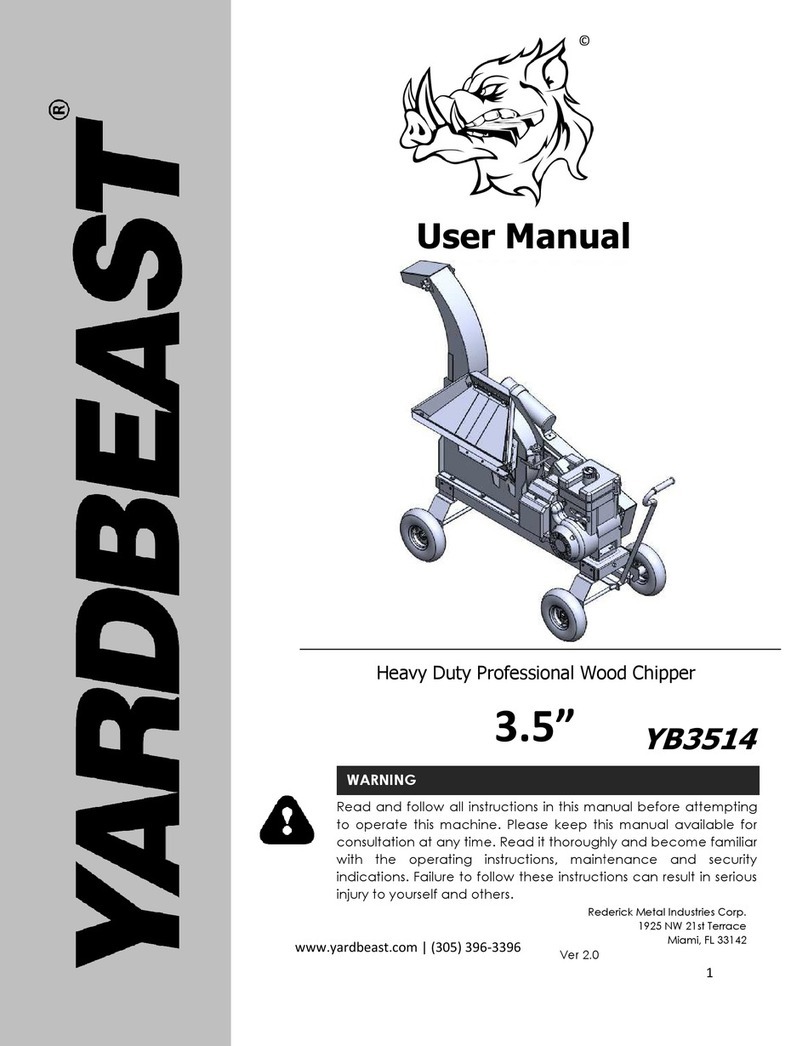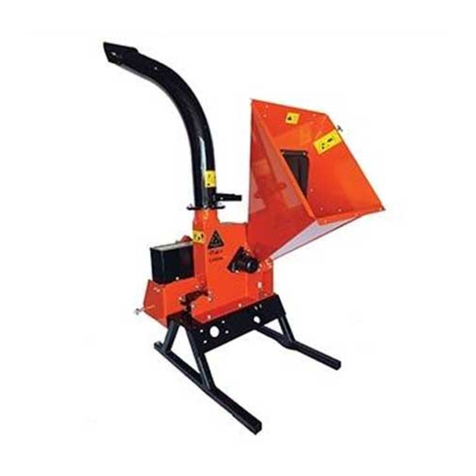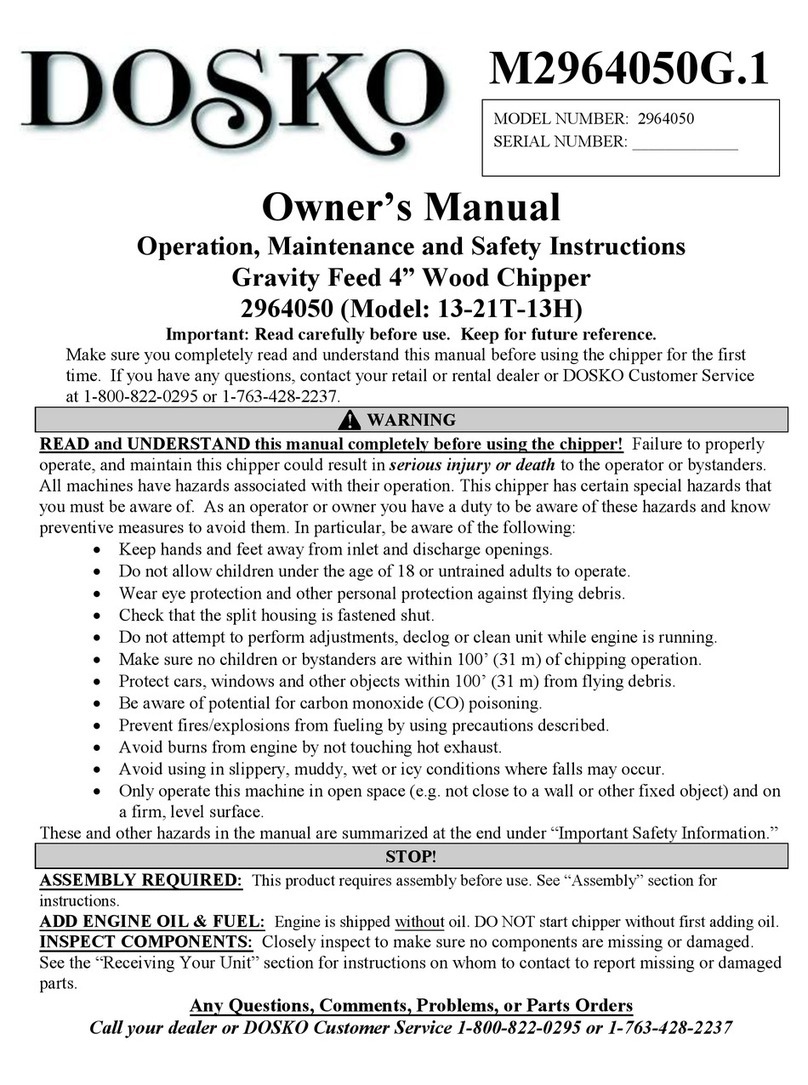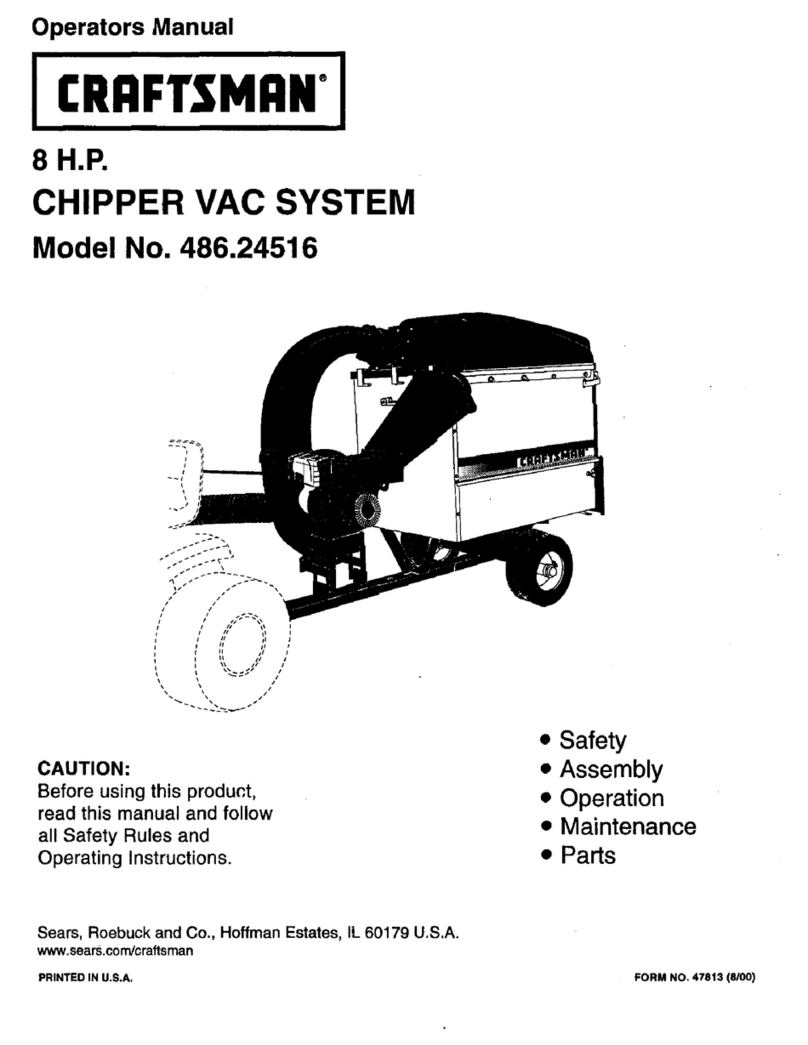OPERATION
(Fig. 1)
The Chipper can handle a MAXIMUM 5” DIAMETER branches. Increase the engine to FULL
throttle, allow the machine to build up to its FULL operating speed and leave for two minutes to
warm up.
Check the reverse operation of the hydraulic feed roller by pushing the operating lever towards the
engine. Do not press the lever beyond the reverse position otherwise the emergency stop switch
will be activated which will stop the engine.
Set the speed of the hydraulic feed roller by adjusting the setting knob up or down the adjusting slot
as required.
It is best to start off the rollers on a slow setting - the speed can be increased for small branches if
required but for the large branches it must be reduced.
Gently feed in the timber until it is gripped by the feed rollers - once gripped,let go of the timber and
the machine will feed itself at the pre-set roller speed.
Feed only one branch at one time - NEVER PUT TWO OR MORE BRANCHES INTOGETHER.
If the rollers jam push the operating lever forwards towards the engine to reverse the rollers and
drive the branch back out.
In the event of any serious occurrence press the operating lever fully to activate the Emergency
Stop.
Attempting to overfeed the machine with too large a branch or too high feed roller speed may cause
damage. The machine is designed to handle only timber - DO NOT PUTANY OTHERTYPE OF
MATERIAL INTOTHE MACHINE.
FINISHING WORK
Once the work has finished,allow the machine to continue running at full speed for one minute to
ensure the rotor housing is completely clear of debris.
Slowly reduce the engine throttle to tick over then switch off the ignition switch. BE C AREFUL OF
HOT EXHAUST.
NB Rotor will continue to rotate silently fora short time after the engine is switched off. Ensure
the rotor is stationary before attempting any cleaning oropening of rotor housing.
ENSURETHATTHE IGNITION SWITCH IS LEFT IN THE OFF POSITION. Stopping the engine
by using the emergency stop switch and leaving the ignition switched on will result in a flatbattery.
BEFORE STARTING
Ensure the machine is on firm,level ground and that the handbrake is ON. DO NOT USE MACHINE
ONASLOPE. (Fig. 1)
Lower the rear stabiliser onto the ground and lock in to place. (Fig. 1)
Remove the clips retaining the infeed chute extension and lower the chute to the operating position.
Secure in place with the retaining clips. (Fig. 2)
Connect the operating cable to the actuating arm. (Fig. 1)
Undo the flap adjuster screw. (Fig. 2)
Unhook the discharge pipe from its transport position. Raise the pipe and secure it into the
operating position with the pipe locking clamp. (Fig. 1)
Set the discharge pipe in the required direction of discharge and set the angle of the outlet flap.
Tighten the flap adjuster screw. (Fig. 2)
Check the engine oil level. (Fig. 1)
Check the hydraulic oil level in header tank. (Fig. 1)
Check fuel level.Only use unleaded petrol from a clean container. (Fig. 1)
TO START ENGINE
(Fig. 1)
Ensure the emergency stop switch is released and the “No-Stress” Control panel is switched on.
If the engine is cold, apply the choke.
Set the throttle to quarter speed.
Turn ignition switch to start the engine and release back to run position once the engine has started.
Release the choke and return throttle to idle.
NB The engine cannot be started unless the intake chute is latched down and the engine cover is
down. Lock-out switches on the chute and cover prevent this.
Fig. 1
Noise emissions up to 104dB(A)
Ear defenders to be worn to BS 6344
GOGGLES
must be worn when
using this machine
Wear
ear protectors
